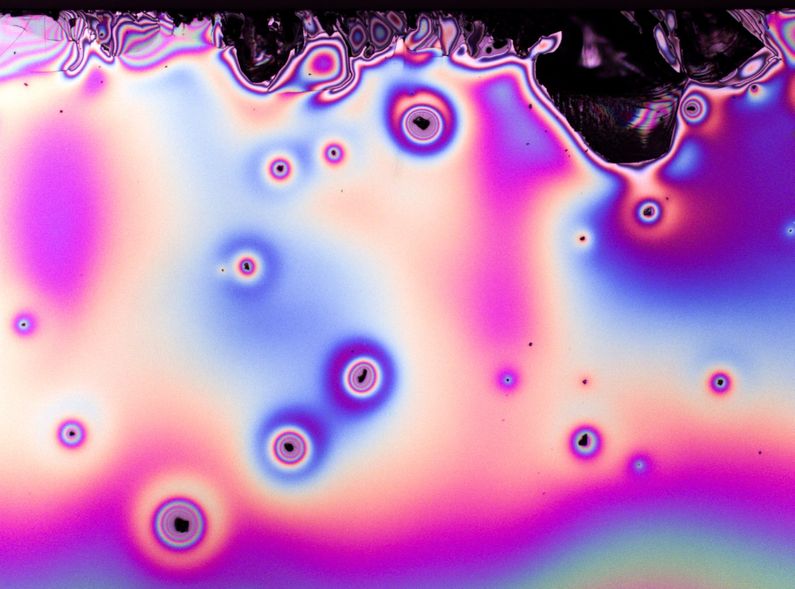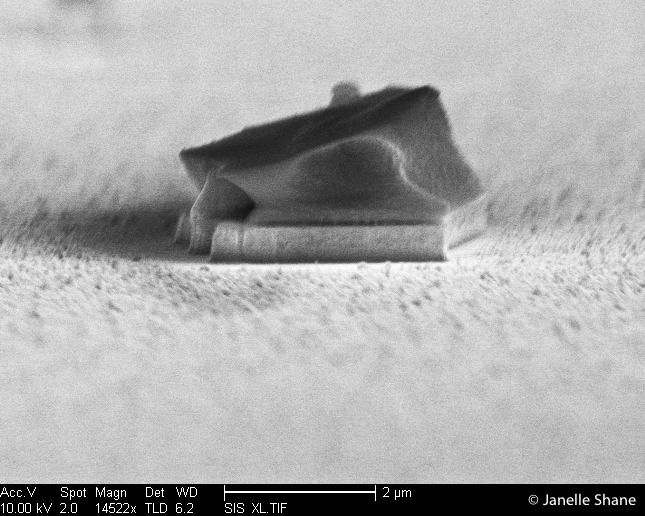This one looked to me like a line of people, standing at attention. It’s
actually an edge-on view of a comb-like grating structure, seen here as it
passes between two rectangular alignment markers. The people-like shape is due
to the weird way the plasma etcher ate away the semiconductor,











